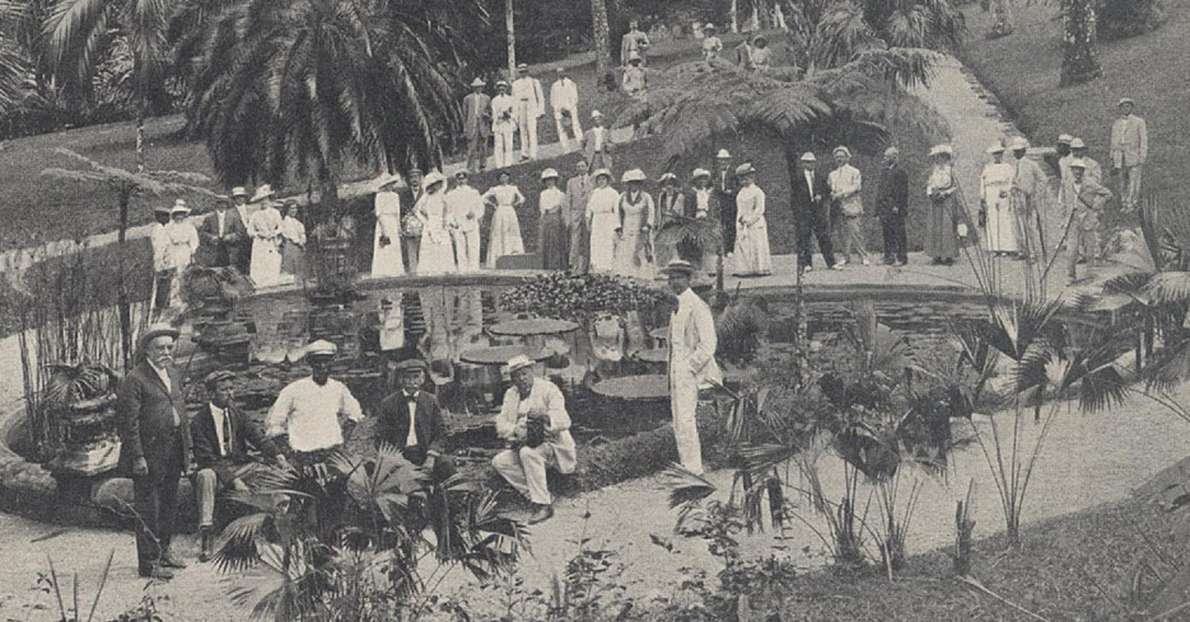
For many of us, a freshly sliced banana topping our morning cereal has become a daily ritual, and these bright yellow fruits have become synonymous with the tropics. However, few of us, are aware of the suffering behind introducing this popular fruit to the U.S. We often take for granted this nutritious potassium-laden fruit because it’s ubiquitous now but in North America and much of Europe that wasn’t always the case. All of that changed, and that’s largely due to the United Fruit Company. A company that sadly, over time, became notorious for its machine-gun diplomacy and deadly working conditions.
The history of this company begins in a way that certainly seems innocuous enough but as the first completely modern multinational corporation, it partnered with corrupt dictatorships across Latin America to spread the gospel of liberal capitalism. For hundreds of thousands of people who would lose their lives, this proved disastrous.

But when Minor Cooper Keith, a young businessman from New York began growing bananas as a sideline next to the railway line he was building in Costa Rica his future looked bright. Both ventures proved prosperous and by 1890 he was married to the daughter of a former Costa Rican president and owned vast banana plantations, which were given to him by the government.
That led to bananas being shipped to New Orleans and Boston and it wasn’t long before demand far outstripped supply. So Keith decided to team up with Andrew Preston, an importer based in Boston, and the United Fruit Company was born in 1899. Initially, only the well-heeled could afford these tropical delights, but the rapidly burgeoning plantations caused prices to fall and the company found it necessary to mass market the fruit to industrial cities in the U.S. Northeast and Midwest. Now bananas, previously only available to the bourgeoisie became the food of the proletariat as well.
By the 1920s the United Fruit Company (UFC) had formed a vast empire stretching across Central America. In South America, the company owned chunks of Colombia and Ecuador. It spread across Jamaica and the Dominican Republic as well. With its octopus-like spread (the company even earned the nickname El Pulpo – Spanish for the Octopus), the company dominated European and U.S. Banana markets, helped along with 100 ships known as the “Great White Fleet,” which became the world’s largest private navy.
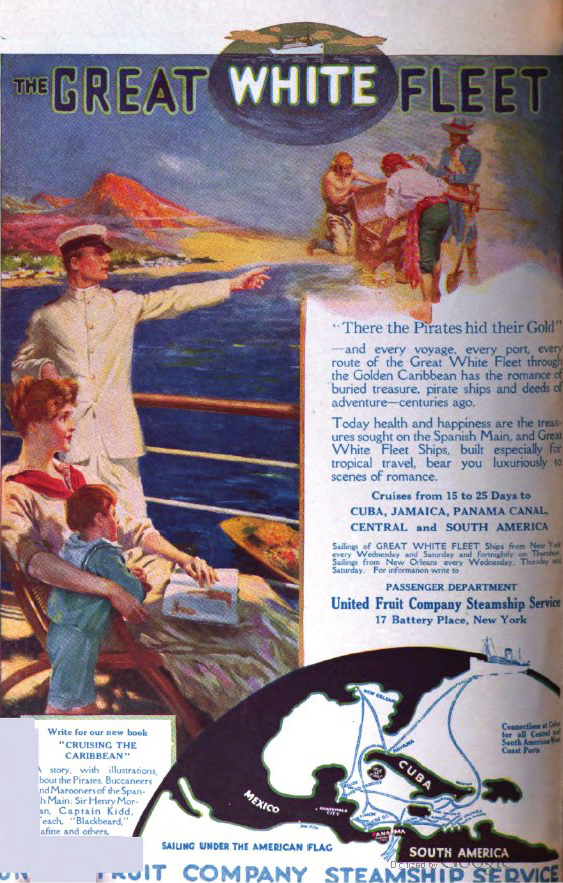
The company became so successful in fact, that by this time it was an international conglomerate, owning more than 1.6 million acres of land and employed 67,000 people. It was now doing business in 32 countries and was worth more than $100 million and became famous for employing ruthless tactics.
While I’m only including seven instances where this company wrought devastation in Latin America, you can be sure there are dozens of other examples. But for right now, let’s just start with:
1. That time in 1954 when the CIA helped the company overthrow the democratically elected government of Guatemala.
The coup, conducted at the behest of the company sparked a civil war that lasted 36 years and claimed the lives of at least 200,000 civilians.
The rumblings that led to this tragedy began long before, however, and were spurred in 1944 when Guatemala elected Juan José Arévalo Bermejo President. Bermejo hoped to undo what his dictatorial predecessor Jose Urbico had done. Urbico granted the United Fruit Company lots of perks and plenty of influence.
But then Bermejo up and did things like establishing a minimum wage, build hospitals and schools, and set up health and safety standards, among other things. He was also looking to end unfair labor practices by large corporations. It wasn’t long before his policies were viewed as communist in origin and considered a threat to the company and other American-owned businesses.
At this point, the U.S. merely stood by but when Guatemala ushered in a new president, Juan Jacobo Árbenz Guzmán, another like-minded leftist who intended to seize land held by the United Fruit Company and redistribute it to poor Guatemalans, the company asked the U.S. to step in.
Which we did. The CIA and the administration of then-president Harry S. Truman responded with Operation PBFortune, a plan intended to overthrow Guzman. While the plan was never carried out, he was removed two years later.
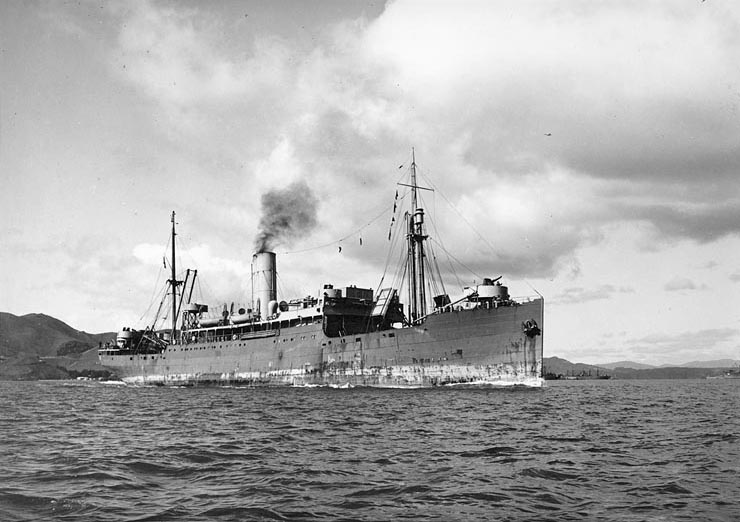
2. The United Fruit Company Massacre, when the Colombian military may have killed as many as 2,000 people.
In 1928, workers at UFC were growing increasingly frustrated over unfair working conditions and organized a strike. Previous negotiations in which workers asked for “written contracts, eight-hour workdays, and six-day work weeks” among other things were ineffective and the demands of the workers were ignored for more than a decade.
As you might expect, this eventually led to civil unrest. Tragically, the government reacted with military force. Colombia’s government was worried that if it didn’t use force the U.S. would intervene on the protester’s behalf. It’s unclear the extent to which the UCF influenced the government’s decision to send in troops, although it’s well-known that the company exerted plenty of influence over the Colombian government at the time.
On the tragic day in question in December 1928, Colombia sent troops to Cienaga, where most of the unrest occurred. General Carlos Cortés Vargas, leader of the Colombian military issued a stark warning to the protesters from his stronghold in the City Center where he ordered the crowd to disperse. However, he gave them little chance to find safety and within five minutes his troops opened fire on the strikers and their families.
This horrible act became known as the “United Fruit Company Massacre,” but the exact death toll isn’t known. According to some accounts, the death toll may have been as low as 47 but others indicate as many as 2000 people were killed.
Beloved Colombian author Gabriel Garcia Marquez immortalized this terrible day in his novel 100 Years of Solitude.
3. UFC ships transported cocaine and spurred the drug cartels in Colombia.
The UFC became linked to the cocaine trade as early as the 1930s while the company was helping Honduras’ President Tiburcio Carías Andino gain power. Drug trafficking in Honduras became big business under Andino and the relationship between the UFC and the drug cartels continued to deepen throughout the 20th Century. As cocaine’s popularity grew during the 1970s — 1980s, Colombia became North America’s largest supplier. Over time, UFC was bought out and re-branded more than once, it eventually became Chiquita Brands International (in 1984.) UFC had built extensive transportation routes throughout Colombia, and of course, this made drug trafficking easier.
Enough so, in fact, that more than a ton of cocaine was seized from seven Chiquita ships in 1997. Unsurprisingly, Chiquita wasn’t blamed for the illegal cargo. Instead, that blame fell to lax security. At this time, Chiquita was funding the United Self-Defenders of Colombia (UAC), a terrorist organization that used the company’s ships to transport cocaine to Europe and North America. It’s even said that Chiquita employees knew about the drugs.
That, however, isn’t even the worst part. Along with all that cocaine, it’s believed the ships carried weapons and ammunition into the country. According to a 2003 report from the Organization of American States, a ship “used by Chiquita’s Colombian subsidiary may have also been used for an illicit shipment of 3000 rifles and 2.5 million bullets for Colombian paramilitary groups. Chiquita, of course, denies this.
Are you even surprised?
4. Between 1997 and 2004 Chiquita Brands executives paid roughly $1.7 million to the United Self Defense Forces (or AUC) to protect a dangerous farming region in Colombia.
This came to light after Chiquita admitted it funded Colombian paramilitary terrorists. In 2007 the company paid a $25 million fine, but in no way is this the first time the company has paid terrorist groups to benefit itself.
The investigation into Chiquita’s misdeeds found that the company previously made “payments to the National Liberation Army, or ELN and the leftist Revolutionary Armed Forces of Colombia (also known as the FARC),” in essence paying whichever group held more power at the time. The company has justified its payments to paramilitary groups by stating it is doing this to protect its employees.
Yeah, right.
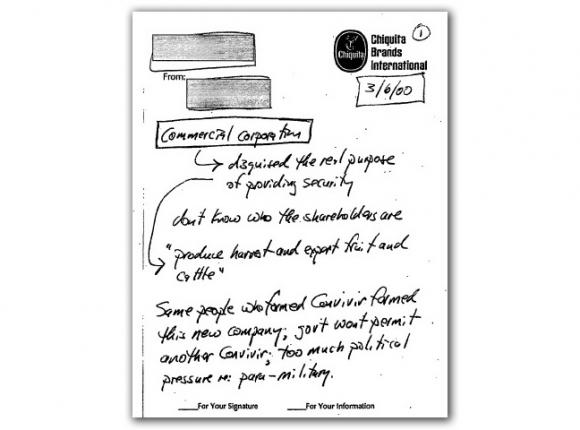
5. The UFC (and then Chiquita) used pesticides that harmed workers and the environment.
It’s not enough that this company has created shocking environmental degradation through deforestation, no, the company has used vast quantities of toxic “pesticides, especially in Guatemala and in Honduras that are very well known to the U.S. to be carcinogenic.” What’s worse, is that many of these chemicals being used are illegal in the U.S., Canada, and Europe. And at least one death in Costa Rica has been linked to these harmful pesticides. But the pesticides used on the banana itself aren’t even the most worrisome part. The chemicals emitted from just one factory, also in Costa Rica, sickened hundreds of people.
6. Many of the UFC’s bigwig lawyers had ties to the U.S. government.
Beginning with Dwight D. Eisenhower’s Secretary of State, John Foster Dulles, who was an attorney with the UFC during the 1930s. His brother, Allen, who was also a lawyer with the company, also, conveniently became head of the CIA.
Then there’s Eric Holder, the Attorney General under former President Barack Obama. He worked with Chiquita Brands International and had a long history with the company. Holder negotiated on the company’s behalf when it had agreed to pay the Justice Department that $25 million fine for financing terrorist groups. Holder argued that punishing a corporation for voluntarily disclosing those payments should be considered in how a company is treated.
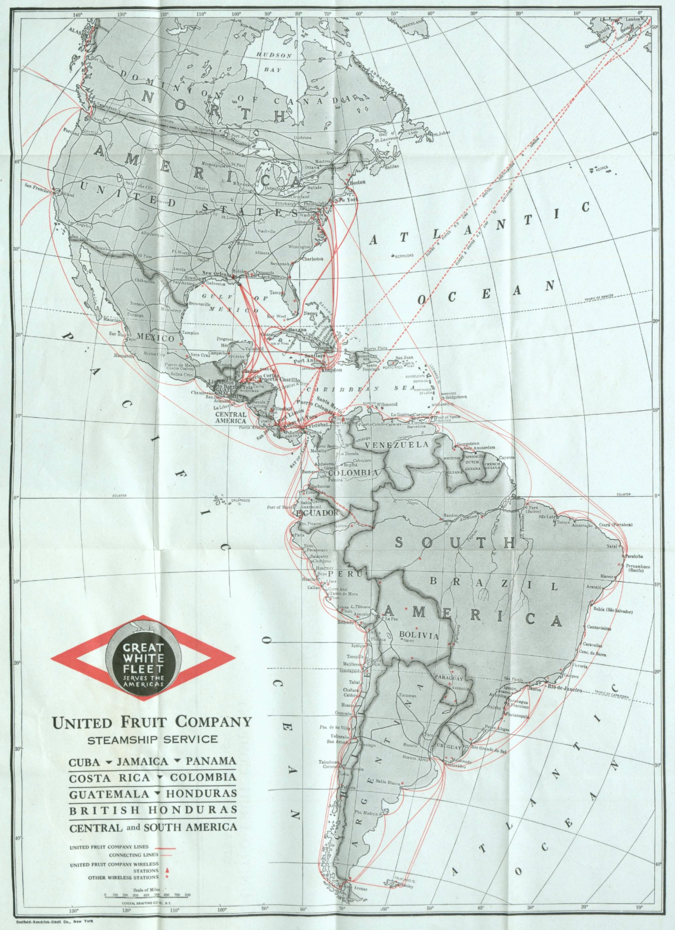
7. The company used the Honduran military to evict people from their own land.
In 1994, Chiquita Brands International (which adopted that name in 1990), informed farmers who were working the Tacamiche Plantation, among others, that they must vacate their land.
Chiquita claimed the land was no longer fertile and was designated for “abandonment.” Most of the families lived on this land since long before the UFC had even entered Honduras, and understandably, they weren’t going to leave easily. The company offered monetary compensation to the workers, but that was refused.
Violence ensued.
“In 1995, ‘four hundred police and soldiers arrested 36 plantation residents, injured about 75 more with tear gas, rubber bullets, and baseball bats, and destroyed 80 hectares of corn and beans planted two months before.”
Then the following year, at the behest of the Honduran President and with the approval of the judiciary, 500 troops were sent to the plantation, where they were met by 400 Chiquita workers. Sadly 100 residents were driven out, and those who didn’t leave were arrested and the town was bulldozed.
Who could even imagine all this pain, all this death, and torment in the name of one banana? Entire forests destroyed, hundreds of thousands of people, all killed for the Cavendish banana. Because that’s the banana we all eat. All these horrors for a fruit that isn’t even native to the Americas but is instead indigenous to tropical India, Southeast Asia, and northern Australia. Bananas weren’t found in the Americas; instead, they were introduced there by the Portuguese in the early 18th Century.
Now, due to the efforts of the United Fruit Company/Chiquita, bananas are the most consumed fruit in North America. While they are lovely to eat, are they really worth it?
Sources:
Rotten Fruit/Financial Times https://www.ft.com/content/778739c4-f869-11db-a940-000b5df10621
Rainforest Alliance https://www.rainforest-alliance.org/species/banana#:~:text=Bananas%20are%20indigenous%20to%20the,in%20the%20early%2016th%20century.
Statista https://www.statista.com/statistics/477475/us-most-consumed-fruit-and-fruit-products-by-type/#:~:text=Most
The Nation: https://www.thenation.com/article/archive/banana-kings/
Visualizing The Americas: https://visualizingtheamericas.utm.utoronto.ca/key-moments/1954-coup/
Ranker/Dark Facts About How The Chiquita Banana Company Operates: https://www.ranker.com/list/dark-chiquita-banana-stories/melissa-sartore
Modern Farmer: https://modernfarmer.com/2014/07/latest-old-time-farm-crime-banana-massacre/
United Fruit Company in Colombia: https://ufcincolumbia.weebly.com/santa-marta-massacre-of-1928.html
Good Reads/100 years of Solitude https://www.goodreads.com/book/show/320.One_Hundred_Years_of_Solitude
The New York Times/Colombia May Extradite Chiquita Officials https://www.nytimes.com/2007/03/19/world/americas/19colombia.ready.html
The Octopus In The Cathedral of Salt https://www.vqronline.org/essay/octopus-cathedral-salt
NBC News/Chiquita Admits to Paying Colombia Terrorists https://www.nbcnews.com/id/wbna17615143#.WqKcbpPwau0
HuffPost Banana Land and The Corporate Death Squad Scandals https://www.huffpost.com/entry/banana-land-and-the-corpo_b_463295
Democracy Now! The Chiquita Banana Story https://www.democracynow.org/1998/7/7/the_chiquita_banana_story
The Naked Corporation: How the Age of Transparency Will Revolutionize Business https://books.google.co.cr/books?id=HcBWcUZo9p8C&pg=PA195&lpg=PA195&dq=1997+chiquit
The Washington Post/In Terrorism-Law Case, Chiquita Points to U.S. https://www.washingtonpost.com/wp-dyn/content/article/2007/08/01/AR2007080102601.html
The New York Times/La Lima Journal; Where Banana Is King, a Revolt Over Farmlands https://www.nytimes.com/1996/07/22/world/la-lima-journal-where-banana-is-king-a-revolt-over-farmlands.html
Global Nonviolent Action Database https://nvdatabase.swarthmore.edu/content/hondurans-tacamiche-resist-eviction-chiquita-banana-company-1994-1997
Encyclopedia of White-Collar and Corporate Crime Volume 1 https://books.google.co.cr/books?id=0f7yTNb_V3QC&pg=PA835&lpg=PA835&dq=united+fruit+honduras+evict&source=